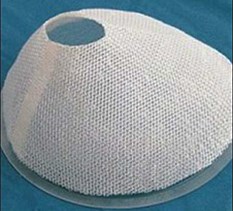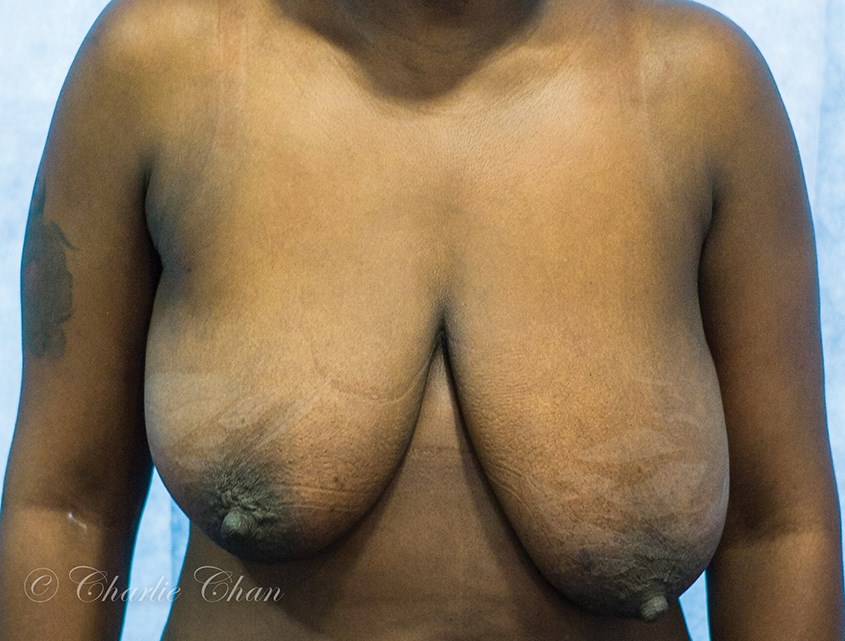Gravity defying breast surgery – the Holy Grail for breast surgeons. Repeat ptosis and pseudoptosis are significant problems facing patients and surgeons after breast reduction and mastopexy. Further surgery to correct this can be challenging, with increased complications, and the likelihood of repeat ptosis.
Breform™ mesh (Figure 1) is a pre-shaped woven polyester internal bra, which prevents repeat ptosis after breast reduction and mastopexy [1].
Figure 1: Breform mesh.
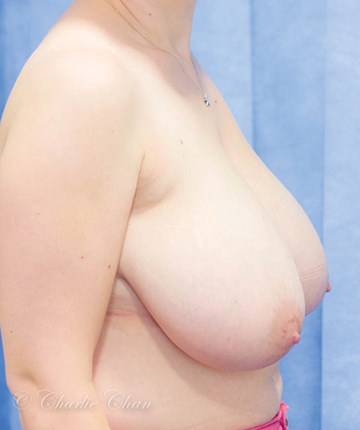
Figure 2a: Breform reduction 36J cup size – preoperative photograph.
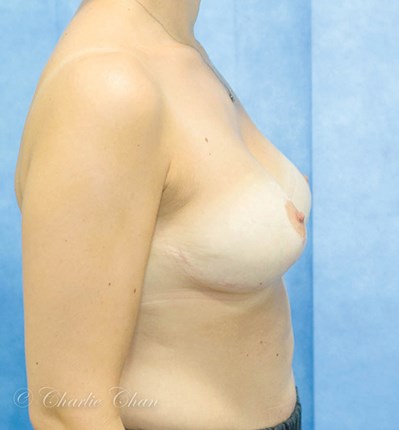
Figure 2b: Breform reduction 36J cup size – postoperative photograph at two years.
Patient selection
As the Breform technique is essentially an adjunct to a standard mastopexy / breast reduction, the patient selection criteria are similar. The only difference is that one would not use Breform mesh in women who have not completed their family.
The largest size Breform mesh (size 8) will normally fit a DD cup. One must bear this in mind when seeing women with very large busts. The lady with the largest bust in our series was a 36J cup (Figure 2).
One should note risk factors, such as diabetes, immunosuppressant drugs, high body mass index, cardiovascular disease, chronic obstructive pulmonary disease and smoking. Increasing age is not a contraindication, as long as the patient is fit.
Breform is an excellent choice, particularly for patients with grade 3/4 ptosis, where the skin / breast parenchyma quality is poor (Figure 3). Breform mastopexy can be considered as an alternative to augmentation mastopexy, especially in those patients for whom the augmentation component is primarily used to tighten the lax skin / parenchyma.
Figure 3a: Breform reduction grade 4 ptosis – preoperative photograph.
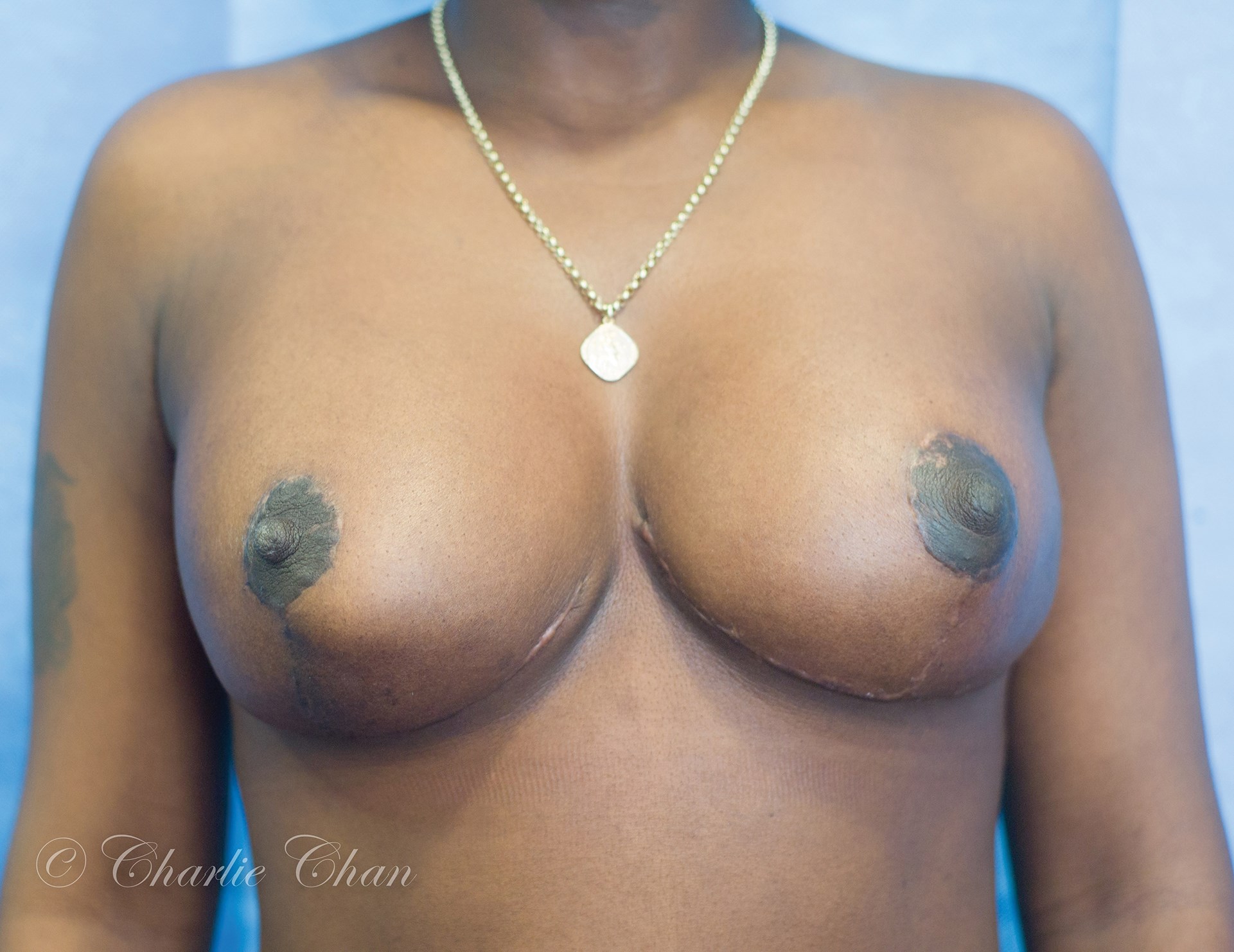
Figure 3b: Breform reduction grade 4 ptosis – postoperative photograph at two years.
Principles of the technique
Most patients are marked up for standard Wise pattern incisions.
The patients are positioned in a semi-sitting position. The surgical technique is a modification of Richard Moufarrege’s posterior dermoglandular technique [2]. Thick skin flaps are elevated up to the peripheral borders of the breast and down to the fascia, taking care to preserve branches of the intercostal nerves supplying the nipple. It is important to elevate the skin superiorly to the level of the second rib; the Breform mesh relies on secure fixation at the upper pole of the breast to support the breast.
After reducing the breast, choose the appropriate mesh size with reusable sizers. The Breform mesh is fixed circumferentially to the chest wall with stainless steel skin clips (e.g. Conmed Reflex One). The skin flaps are re-draped and wounds closed over a drain.
Postoperative care and complications
Breform patients require standard postoperative care following a breast reduction / mastopexy. Wound problems are reduced after Breform, as the mesh takes the weight of the breast, and reduces wound tension. Postoperative seromas can occasionally occur.
Results
We have performed 80 procedures on 48 women (age 32-75); this is possibly the largest experience in the UK. The majority had aesthetic procedures, but some were cancer patients [3]. The longest follow-up in our series is five years.
All patients have excellent cosmetic results. None have palpable mesh, and the breasts have remained soft. One breast cancer patient has received adjuvant radiotherapy to the breast after Breform mesh; her breast remains soft. Two thirds of women have stopped wearing bras after Breform. No patients have developed repeat ptosis.
The incidence of complications is low – minor wound breakdown (10%), seroma (8%), haematoma (4%), infection (4%), nipple necrosis, palpable mesh and mesh exposure (all 0%).
Breast assessment after Breform surgery
It is important that women are able to undergo routine breast screening and breast triple assessment, after aesthetic surgery. We have performed mammography, ultrasound, CT, MRI (even with stainless steel skin clips) and positron emission tomography (PET) [4]. Two patients have required breast core biopsy without problems. Breast cancer surgery and radiotherapy can even be performed on women with Breform.
LEARNING POINTS
-
Excellent technique for women with significant ptosis.
-
Patient selection as per normal mastopexy / breast reduction, except not in women who have not completed their families.
-
Operate on the patient in a semi-sitting position to get the optimal cosmetic result.
-
Ensure that the dissection is taken up to the level of the second rib, to allow secure anchoring of the mesh to the chest wall.
-
Breform mesh permits tension free closure.
-
Low incidence of complications.
-
Breasts remain soft, with no contracture.
-
Breform mesh prevents repeat ptosis.
-
Routine breast imaging and breast assessment (including MRI and core biopsy) unaffected by Breform mesh.
References
1. de Bruijn HP, Johannes S. Mastopexy with 3D preshaped mesh for long-term results: development of the internal bra system. Aesthetic Plast Surg 2008;32(5):757-65.
2. Moufarrege R, Beauregard G, Bosse JP, et al. Reduction mammoplasty by the total dermoglandular pedicle. Aesthetic Plast Surg 1985;9(3):227-32.
3. Chan C, Court F, Bristol F. Breform pre-shaped polyester mesh – extending its uses for cancer patients. EJSO 2016;42(5):S21.
4. Chan C, Court F, Humzah D, Bristol J. Postoperative breast imaging surveillance is unaffected by the use of Breform polyester pre-shaped mesh. EJSO 2016;42(5):S21.
Declaration of competing interests: None declared.
Editor’s note: This is a well written article that illustrates a technique and its tangible outcomes. However, I feel it is important to consider dynamics and the biochemical molecular changes in any mesh implanted in any part of the body. Hernias by the thousand, give an indication of biological compatibility of new materials and devices. But breast shape changes over time and how is the mesh incorporated into the connective tissue support matrix? Only time, and a wide variety of patients will tell, as there will be many biological variables involved. A good and thought-provoking article.
Professor Andrew Burd
COMMENTS ARE WELCOME

